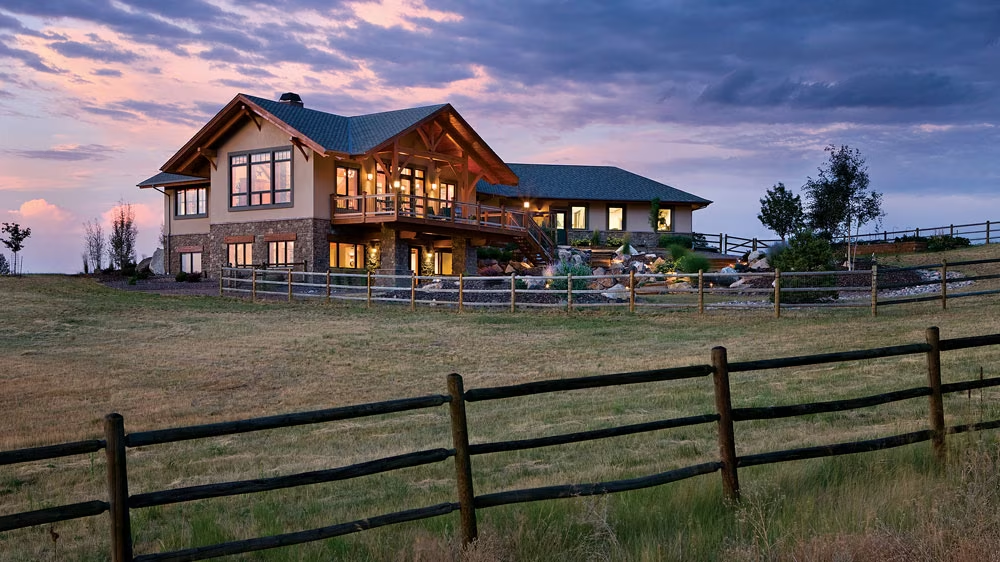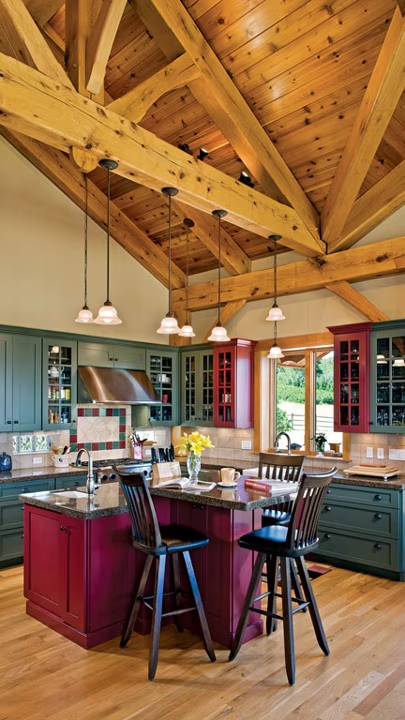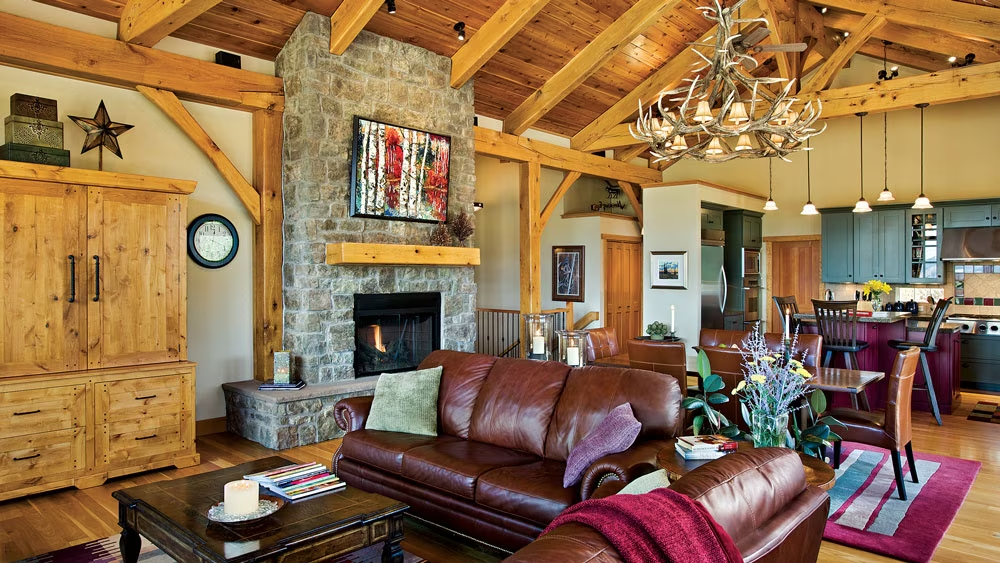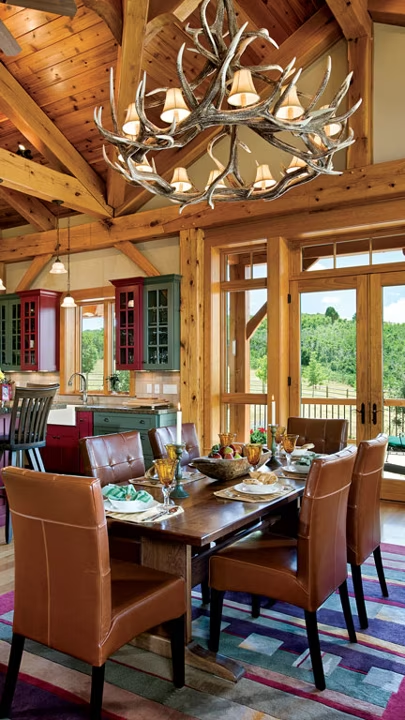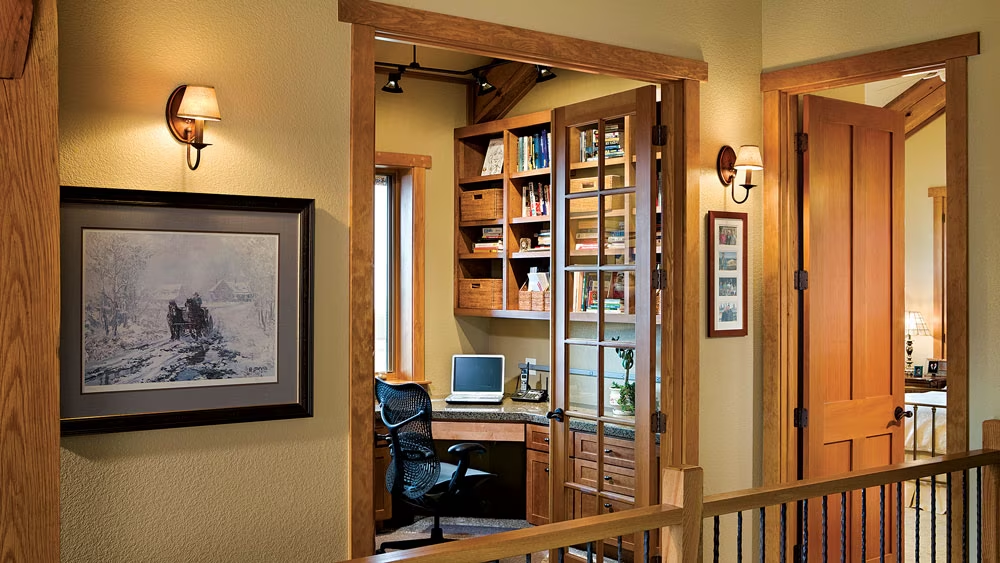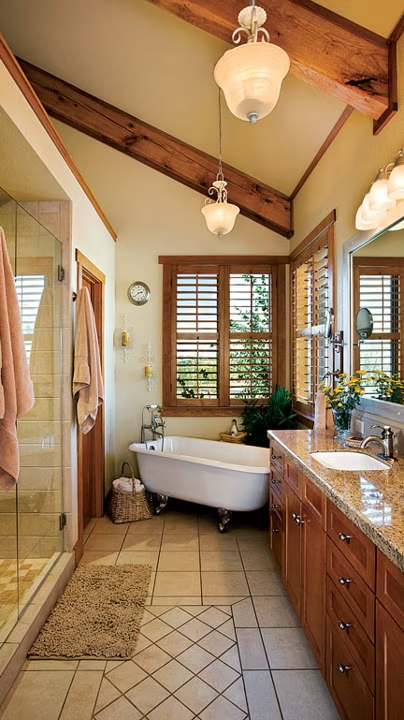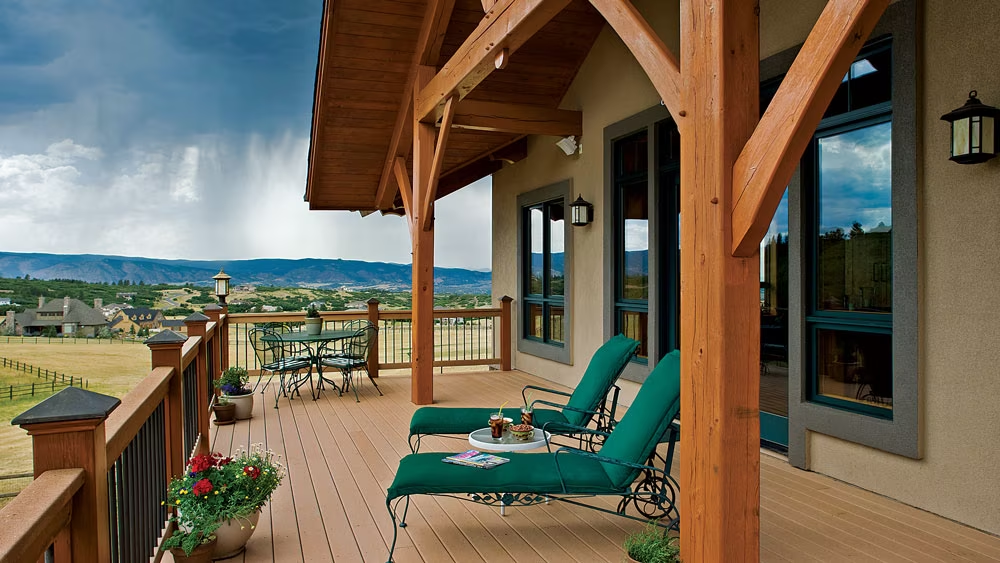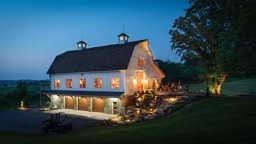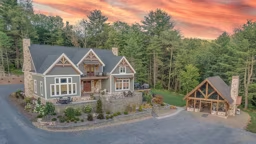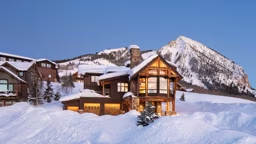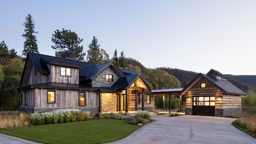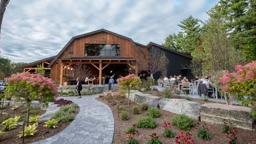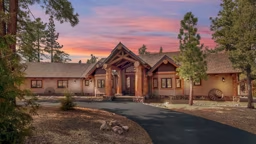Dwayne Kula’s and Anita Oliver’s Colorado timber home has gone to the dogs — but they don’t mind.
“We designed the house with the dogs in mind,” Dwayne says. And so their custom home plans included a doggie door, a 6-foot kennel enclosure, extra-durable flooring, and a garage bathing area with hot and cold water, among other things. The pet-friendly accommodations have been a hit with Rugger and AnnaBelle, both German Shepherds, and Karma, a terrier mix.
It was just one way Dwayne and Anita strived to create a house perfect for their family. Although they continue to tinker with the home seven years after moving in — trying to make it as energy efficient as possible — they are still smitten with the timber-home lifestyle.
“We like it relatively simple and comfortable, easy-going,” Anita says. “I love the mountain style, the lodge style. We’re big fans of things that come from nature.”
A Dream Begins
Dwayne fell in love with timber homes nearly two decades ago while watching a “This Old House” episode about a New England home crafted from an old barn. “I was just enthralled with the whole timber frame and the process,” he says. When he and Anita, both native Canadians, settled in Colorado, they started planning for their mountain dream home.
Their 5.75-acre property is set in the picturesque Keene Ranch community, which overlooks the Rocky Mountains and is surrounded by 60 miles of horse trails.
“The views are fantastic,” Dwayne says. “We’re literally 15 minutes from Denver, but you’d never guess it. We have a herd of elk that lives in the neighborhood. We have bears, mountain lions, bobcats, you name it.”
After purchasing the property, the couple teamed up with architect Judd Dickey of Mountain Timber Design and timber provider Wind River Timberframes. The end result was a three-bedroom, two-and-a-half-bath home that has a compact footprint of 2,100 square feet, with the finished basement bringing it to a total 4,200 square feet.
“There’s only two of us, so we really wanted a ranch home,” Dwayne says. “It was more important for us to have a smaller, well-built home than a lot of square footage.
Key Elements
“We knew we wanted a big great room,” Anita says. “We like to entertain quite a bit, so we wanted one big space for everybody to congregate and gather.”
The space fulfills its purpose: With the nearby fireplace and dazzling mountain views, guests rarely want to leave the dining room table, she notes.
Anita loves the kitchen’s efficient design. “I do all my prep on the island, and everything I need is within a step or two,” she says. “The location and size of the prep sink is an accidental stroke of genius. My husband uses the farm sink for all the cleanup while I am cooking, and I use the prep sink for all the rinsing, washing, etc. We never trip over each other as a result of needing to access a sink.”
Lighting was also important. “You never can have too much light in the kitchen,” Anita states. “We have several layers of lighting, for the brightest workspace all the way down to ambient lighting for a sophisticated, after-dinner, more relaxed effect.”
The couple tried to design the house with their guests in mind, adding such considerations as vanities in both of the guest bedrooms, a privately located powder room, and a handheld shower head and built-in bench in the guest bathroom for senior guests.
A home office was also key for both, and a five-car garage ensured plenty of space for Dwayne’s woodworking hobby.
See also The Virginia Timber Frame That Blends Beauty & Nature
Materials Matter
One of the features that makes the house stand out is its oak timber frame. “It’s got a much different character, a lot of variation in grain and color,” says the timber provider. And after researching what kind of hardwood flooring would hold up best under dogs’ nails, Dwayne and Anita opted for white oak floors as well. They chose a cedar roof to blend more easily with the timber frame.
Energy efficiency was also a major priority, and the roof’s relatively low pitch helps reduce heating costs, says the architect. The couple also selected walls made from insulated concrete form (ICF) blocks, even though it cost about $10,000 more. “You’d be hard-pressed to find anything more energy efficient than concrete walls,” Dwayne states. “In the winters, we can keep our thermostat at 69 degrees, and our house feels warmer than the neighbors’ homes at 73 degrees.”
But the concrete made construction a little trickier. Because of the walls’ soft foam exterior, the timber frame had to be fastened to the concrete with steel connectors. Otherwise, “the roof can move independently from the walls,” the architect explains.
It was the first time the timber provider had set a frame into concrete. “That made it more challenging,” says Alan Bernholz, owner of Wind River Timberframes. “It’s always a little scary going into that situation because concrete is concrete, and once it’s set, it’s set. You can’t make any mistakes with the measurements.” Fortunately, it went without a hitch.
Energy Efficiency
In addition to insulating against the region’s cold and high winds, the couple tried to be smart about blocking the sun. “Because the Colorado sun is so intense, you have to control the sun, and the way to do it is with big overhangs,” Dwayne explains. The house includes 6-foot overhangs, as well as double-pane ultraviolet (UV) windows and solar shades on the west-facing windows. “It makes a tremendous difference,” he notes. “In the summer, it keeps the house so much cooler. It probably reduces the heat by 5 degrees.”
It’s no surprise that the couple selected energy-efficient appliances. “It’s absolutely marvelous and greatly reduces our natural gas consumption,” Dwayne says. “And we’ve never once run out of hot water.”
Since moving in in 2004, they’ve tried to reduce their energy consumption even further. They recently converted their furnace to a DC motor and are adding light-emitting diode (LED) lights throughout the house. Their next plan is to put up solar panels and wind turbines. “The whole idea is to get off the grid,” Dwayne says. “Hopefully we can generate more energy than we use.”
But as much as they love their home, there are a few things they’d change next time. “Anyone who says they’d never change a thing is probably lying,” Anita says wryly. “Additional square footage in a couple of key places would have been nice. The entryway we’d probably make a little grander. We’d probably devote space to individual home offices and our master bedroom suite.”
They might have their chance.
“I don’t think this is going to be our last house. I think we have one more in us,” Dwayne says. “And I asked Anita, ‘If you had to do it again, would you do a timber frame?’ And we both would. The rustic timber-frame lifestyle fits the way we want to live.” n
Home Details
Square footage: 4,200
Architect: Mountain Timber Design
Builder: Genuine Homes
Timber Provider: Wind River Timberframes




